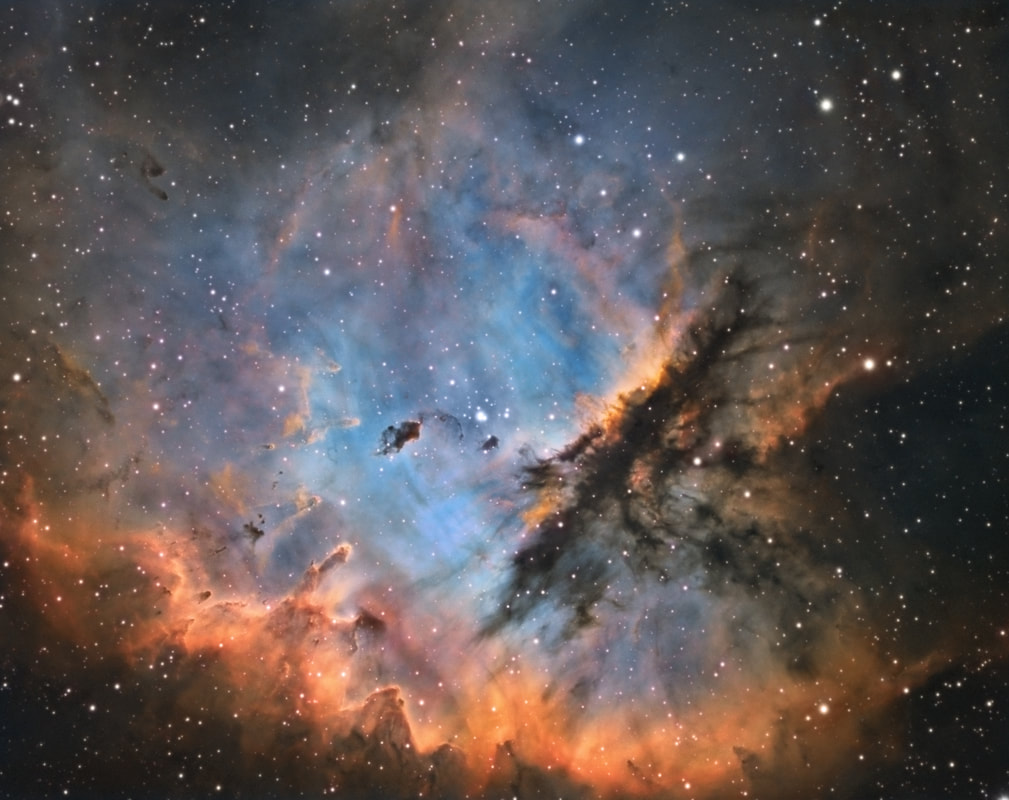NGC281 - The Pacman nebula
|
Details.
M: Mesu 200 T: TMB 152/1200 C: QSI690 3nm Chroma narrowband filters 20x1800s in each filter (Ha, OIII and SII) The total exposure is 30 hours. |
NGC 281, IC 11 or Sh2-184 is a bright emission nebula and part of an H II region in the northern constellation of Cassiopeia and is part of the Milky Way's Perseus Spiral Arm. This nebulosity is also associated with open cluster IC 1590, several Bok globules and the multiple star, B 1. A recent distance from radio parallaxes of water masers at 22 GHz made during 2014 is estimated it lies 9200 light years. from the Earth Colloquially, NGC 281 is also known as the Pacman Nebula for its resemblance to the video game character.
E. E. Barnard discovered this nebula in August 1883, who described it as "a large faint nebula, very diffuse." |

